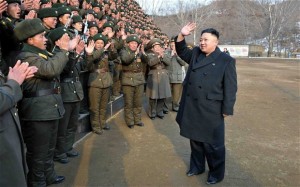By Jason Hois
On January 6th 2016, North Korean officials claimed the nation had detonated its first hydrogen bomb. Although most specialists assert it was a much smaller boosted fission bomb, this nuclear test is North Korea’s fourth illegal test and a clear violation of international law. In response, sanctions have piled up against the North Korean regime, including requirements to search every cargo shipment entering the country. Sanctions also prohibit all North Korean energy exports and sales of military hardware of any kind to the DPRK. However, these sanctions still allow trade to occur along the North Korean-Chinese border without inspections. Nevertheless, as tensions worsen on the Korean peninsula, it becomes ever more important for the international community to piece together the chain of events to understand what responses worked and failed in the past.
North Korea’s only major ally in the region and perhaps the world is its neighbor China. Since the nation’s independence from Japan in 1945, North Korea pursued a path of communism under Kim Il-sung. It is extremely important to note that when Kim launched his blitz on South Korea in 1950, he did so against the wishes of the Chinese. China recognized American willingness to defend South Korea and attempted to control its ally, unsuccessfully. The Korean War was not a war China wanted, and its army suffered staggering casualties. China’s resentment toward open conflict on the Korean peninsula is important, as it illustrates its true intention to maintain a stable rather than belligerent state in North Korea. China remains North Korea’s only major trading partner and single-handedly props up their failing economy. Sanctions from the UN Security Council signal China’s acquiescence to pressure its client state to denuclearize or at the very least, stop testing nukes.
Another important nuance in North Korea’s foreign policy was its willingness to ‘open up’ after the Cold War in 1991. Following the collapse of the Soviet Union, North Korea lost a crucial trade partner and witnessed a global decline in communist power. While East and West Germany reunified, North and South Korea agreed to new terms of cooperation and mutual respect. The intent of South Korea was moving closer to reunification and both parties followed up with a Joint Declaration on the Denuclearization of the Korean Peninsula. Despite all the successes of the two Korea’s to bring their nations closer together and end nuclearization, US foreign policy brought it all crashing down.
Since the Korean War, the US has maintained a significant army in South Korea, to deter the North from launching another 1950 style blitz. In the early 1990s, US and South Korea policy mirrored each other as both moved to demilitarize the peninsula. Their efforts proved increasingly successful as the North followed suit. However, in 1993 President Bush brought all these successes to an end when he announced an increase in forces on the peninsula. Two months later, North Korea withdrew from the Non-Proliferation Treaty, signaling the world that it was pursuing a course to nuclearization.
Although both sides have tried various methods of deterrence and compellence to stop North Korea from nuclearization since the early 1990s, Kim Jong-un has loyally pursued his course. The Korean peninsula remains one of two flashpoints, the other being Taiwan, that could drag both the Koreas, China, the US, and perhaps Japan, into a conflict. The US recently announced its intention to deploy the THAAD missile defense system in South Korea, capable of shooting down missiles. China viomently opposes this as THAAD’s radar system extends 1000 km into northeast China.
A follow up story documenting more recent activities on the part of the actors will be reported on Monday, March 7th.

